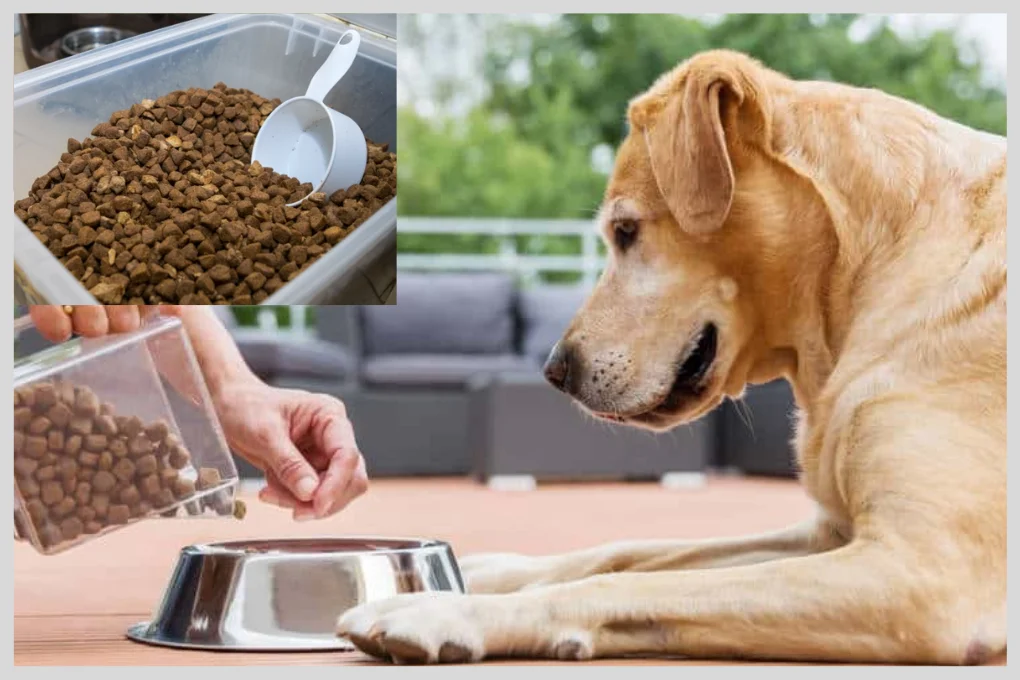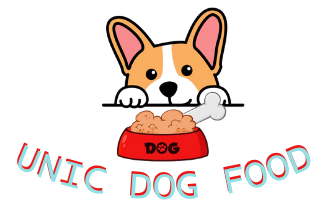Have you ever wondered does dry dog food go bad if left out? Is a common concern for pet owners. As a devoted dog parent and a passionate advocate for pet well-being, I’ve delved into the nitty-gritty of kibble storage.
Leaving dry dog food exposed to the elements can indeed lead to spoilage. The enemy here is moisture—moisture accelerates bacterial growth, causing the food to deteriorate rapidly.
Not only does this compromise the nutritional value, but it also poses a health risk for your furry friend.
In this blog post, I’ll delve into the intricacies of pet nutrition storage practices and dispel any myths surrounding the shelf life of dry dog food.
Does dry dog food go bad if left out?
Yes, dry dog food can go bad if left out. Exposure to air, humidity, and heat accelerates the process. The nutrients degrade over time, affecting your dog’s health.
Unopened dry dog food typically maintains quality for about 12-18 months. However, it’s best to finish it within 6 weeks to prevent it from becoming stale once opened. The freshness diminishes after this timeframe.

Always store it in a cool, dry place and seal the bag tightly. Check for any signs of spoilage, like a rancid smell or change in color. Discard if unsure. Remember, your pet’s well-being is at stake.
How can you tell if dry dog food is bad?
Detecting whether dry dog food is bad involves using your senses and noticing certain signs.
Here are some indicators that dry dog food may be spoiled or no longer suitable for consumption:
Smell
Fresh, good-quality dry dog food should have a neutral or meaty aroma. Detecting any foul or rancid smells is a clear sign that the food may have gone bad.
Dogs, like humans, rely heavily on their sense of smell, and a displeasing odor could be an instant turn-off.
Appearance
Inspect the individual kibble for any signs of mold, discoloration, or unusual spots. Mold can develop in dog food when exposed to moisture, compromising its safety and nutritional value.
Discoloration may also indicate oxidation or the breakdown of fats in the food, making it unsuitable for consumption.
Texture
Dry dog food should maintain its intended texture. If the kibble feels excessively oily, sticky, or clumped together, it might suggest that the fats in the food have gone rancid.
This not only affects the taste but also the nutritional content of the food.
Expiration Date
Always check the expiration or “best by” date on the packaging. The manufacturer determines this date based on the product’s expected shelf life.
Consuming dog food past its expiration date could pose health risks to your pet, as the nutritional integrity of the food may have degraded.
Packaging Integrity
Ensure that the packaging is intact without any visible damage. Damaged packaging can allow air, moisture, or pests to enter, accelerating the spoilage process.
Airtight and properly sealed packaging helps preserve the freshness and quality of the dog food.
Insects or Pests
Inspect the food for any signs of insects or pests. The presence of bugs indicates contamination and can make the food unsafe for consumption.
Keep the dog food storage area clean and well-sealed to prevent infestations.
Changes in Pet Behavior
Pay attention to your dog’s behavior. If your pet suddenly refuses to eat the food or exhibits signs of gastrointestinal distress, such as vomiting or diarrhea, it could be a response to spoiled or contaminated food. In such cases, discontinue use and consult your veterinarian.
Always store dry dog food in a cool, dry place, and seal the bag properly after each use to maintain freshness.
If you have any doubts about the quality of the dog food, it’s better to err on the side of caution and choose a new, unspoiled bag for your pet. If you’re unsure, consult with your veterinarian for guidance.
Is it OK to put dog food in a plastic container?
No, putting dog food in a plastic container is not advisable. Plastic can absorb odors and oils from the food, leading to contamination.
Additionally, it may not seal tightly, allowing air and moisture to compromise the food’s quality.
Opt for airtight, pet-safe containers like stainless steel or BPA-free materials for storage. Your pup’s health is worth the extra care.
Can old dry dog food make dogs sick?
Yes, old, dry dog food can make dogs sick. As it ages, the nutrients degrade, potentially causing digestive issues.
Exposure to air and moisture promotes the growth of bacteria and mold. This can lead to stomach upset, vomiting, and other health issues.
Always prioritize your dog’s well-being and check for signs of spoilage before serving.
How to keep your dog food fresh?
Keeping your dog’s food fresh is essential for maintaining its nutritional value and ensuring your pet’s well-being.
Here are some tips to help you keep your dog food fresh:
Store in a Cool, Dry Place
Keep the dog food in a cool, dry location to prevent mold and bacteria growth.
Exposure to heat and humidity can accelerate the spoilage process. Avoid storing it near appliances that generate heat or in direct sunlight.
Use Airtight Containers
Transfer the dog food from its original packaging to airtight containers.
Airtight containers help seal out moisture and air, preserving the freshness of the food and preventing it from becoming stale. Make sure the container is clean and dry before transferring the food.
Reseal Original Packaging
If you prefer to keep the food in its original bag, always reseal the packaging tightly after each use. Use the built-in resealable strip or secure it with a clip or other sealing device.
This helps maintain the integrity of the packaging and prevents air entry.
Avoid Plastic Bins
While plastic bins are commonly used for storing dog food, they may not be completely airtight.
If using a plastic bin, choose one specifically designed for pet food storage and ensure that the lid forms a tight seal.
Monitor Expiration Dates
Purchase dog food with a reasonable shelf life, and be mindful of the expiration or “best by” date.
Use older bags of food first to prevent any risk of expiration. Rotate your stock to ensure that you’re always using the freshest food.
Clean Feeding Bowls
Regularly clean your dog’s feeding bowls to prevent the buildup of oils and fats, which can become rancid over time.
Wash bowls with hot, soapy water and ensure they are thoroughly dry before adding fresh food.
Avoid Mixing Old and New Food
If you need to replenish your dog’s food container, try not to mix old and new batches.
If possible, clean the container before adding the new food to prevent the transfer of any contaminants or stale residues.
Store in Original Packaging until Use
If your dog food comes in a resealable bag, keeping it in the original packaging is often best until you’re ready to transfer it to a storage container. This helps maintain the food’s freshness until it’s opened.
By following these practices, you can help ensure that your dog’s food remains fresh, palatable, and nutritionally beneficial for your pet.
Regularly inspect the storage containers and the food to catch any signs of spoilage early on.
If you have doubts about the freshness or safety of the dog food, consult your veterinarian.
How long does dry dog food last?
The shelf life of dry dog food varies. Unopened, it’s good for about 12-18 months. Once opened, aim to use it within 6 weeks to maintain freshness.
Proper storage in a cool, dry place is crucial for preserving quality. Regularly check for any signs of spoilage, like changes in smell or appearance. Your pup’s health is my priority.
FAQs
Can I Freeze Dry Dog Food?
Freezing is acceptable, but ensure proper thawing before serving.
Are Homemade Storage Bins Safe?
Homemade bins can be used if they’re airtight, clean, and made of pet-safe materials.
How long can dry dog food be left out?
Dry dog food should not be left out for more than 24 hours to prevent spoilage.
Is It Safe To Feed Expired Dry Dog Food?
Feeding your dog expired dry food is not recommended, as it may lead to health issues.
Conclusion
The answer to the burning question, “Does dry dog food go bad if left out?” is a resounding yes, but fear not, pet parents! With the right knowledge, you can ensure your pup’s meals remain as fresh as ever.
Remember, keeping your dog’s food in optimal condition isn’t just about preserving flavors; it’s vital to ensure they receive the nutrition they need.
From understanding the factors that influence shelf life to spot those telltale signs of spoilage, you’re now equipped to be the guardian of your pet’s pantry.
As pet lovers, we aim always to give our companions the happiest, healthiest lives possible. By staying informed and proactive, you’re not just a pet owner but a pet care superhero! So, here’s to many more tail wags, wet nose nudges, and delightful mealtimes with your beloved canine companion.
Keep the kibble fresh, and keep the love flowing!
- Homemade Bone Broth For Dog Recipe - December 17, 2025
- Can You Cook Raw Dog Food? - September 10, 2025
- Homemade No-Bake Dog Treat Recipes Your Pup Will Love - September 6, 2025
